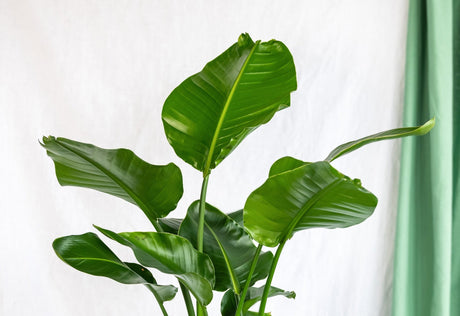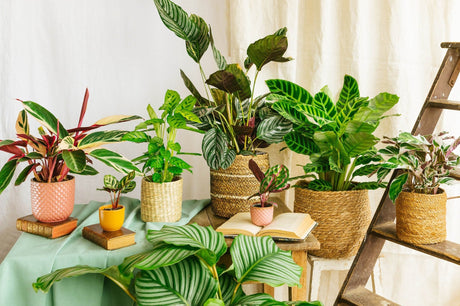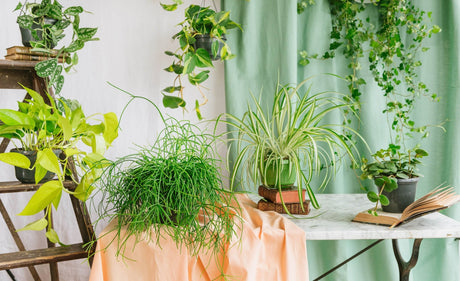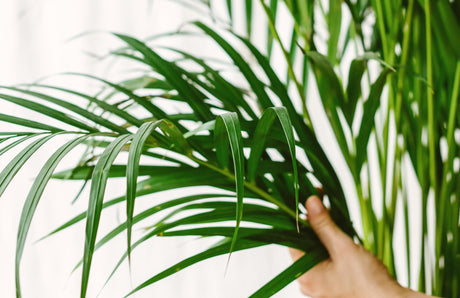Native of the tropical regions of South America, this plant belongs to the family of Urticaceae. With its decorative leaves and its habit of growth compact, the Pilea involucrata is a choice ideal to add a touch of greenery exotic to your interior space.
The leaves of the Pilea involucrata are its most remarkable characteristic. They are shaped round to oval and have ribs deep that create a pattern fascinating in the shape of a capitulum, hence its common name.
1. Watering the Pilea involucrata
Prefer watering moderate and regular rather than excessive watering. Avoid letting the plant soak in water standing, which could lead to problems of rot of the roots.The frequency of watering can vary as a function of factors such as the temperature ambient, humidity and size of pot. In general, water your Pilea involucrata about once a week during the active growing season (spring and summer). Reduce the frequency during the dormant period in autumn and winter, watering only when the soil is slightly dry.
Tip: Insert your finger into the ground to a depth of approximately 2-3cm. If the soil is dry at this depth, it is usually time to water it.
2. Watering techniques
Watering at the base
When watering Pilea involucrata, pour the water directly into the soil around the base of the plant. Avoid watering the leaves, as excessive moisture on the leaves can promote the development of fungal diseases.Slow and gradual watering
Rather than pouring a lot of water all at once, opt for a slow and gradual watering. This allows water to be better absorbed by the soil and roots without risking excessive runoff.3. The exposure of the Pilea involucrata
Pilea involucrata prefers light indirect bright. Place your plant near a window facing east or west, where it receives a light filtered but bright throughout the day. Avoid direct light from the sun, as it can scorch the delicate leaves.To ensure uniform growth, rotate regularly your Pilea involucrata a quarter turn every times you water it or every two weeks. This will allow all parts of the plant to receive an equal amount of light.
4. When should I repot my Pilea involucrata?
Repotting of Pilea involucrata is generally recommended in spring, at the beginning of the season of growth active. This period allows the plant to take advantage of the increase in light and heat to promote a recovery rapid after the stress of repotting. The signs indicating a need of repotting:Encumbrance of the pot
If the roots of your Pilea Involucrata have filled the current pot, it's time to repot. You may notice roots sticking out of drainage holes or stunted plant growth.Slow growthe
If your Pilea involucrata seems to have stopped growing, is producing fewer new leaves, or the leaves are getting smaller, this may indicate that it is cramped in its current pot.Soil depletion
If you have noticed that the soil no longer holds moisture as well as it used to, or if the plant requires more frequent watering, this could be a sign that the soil is depleted of nutrients.Root overflow
If you carefully remove the plant from the pot and see a dense tangle of roots that can no longer grow freely, it's time to repot.5. What fertilizer should I use for my Pilea involucrata?
For your Pilea involucrata, you can opt for a fertilizer balanced and water-soluble, especially formulated for indoor plants.Fertilizer frequency
During the period of active growth, in spring and summer, you can fertilize your Pilea involucrata every 4 to 6 weeks. In winter, when growth slows, reduce frequency to once every 6-8 weeks.Dosage
Follow the instructions on the fertilizer package for the proper dosage. It is generally recommended to dilute the fertilizer in water according to the guidelines to avoid over-fertilizing.Application
Water your plant first with normal water to moisten the soil. Then add the fertilizer to the watering water, following the dosage instructions. Water your Pilea involucrata with this fertilizer solution. Avoid pouring the fertilizer directly on the leaves to avoid the risk of burns.6. How do I multiply my Pilea involucrata?
To multiply your Pilea Involucrata, you can use the method of the stem cutting. Choose a healthy stem with multiple nodes and carefully remove the bottom leaves. Place the cutting in water to grow roots. Once the roots are sufficiently developed, plant the cutting in a new pot with potting soil. Waterregularly and placein a bright spot, but avoid direct sunlight.7. Diseases of Pilea involucrata
Pilea involucrata is generally a plant hardy, but it can be prone to certain diseases . Here are some problems common and tips for preventing and managing them:
Root rot
Overwatering or poor drainage can lead to root rot. To prevent this, be sure to allow good drainage in the pot and avoid leaving the plant in a saucer of standing water. Water only when the soil is slightly dry and make sure the pot has drainage holes.Fungal spots
Brown or black spots on the leaves can be caused by fungi. Avoid overwatering, make sure you have good air circulation around the plant, and avoid wetting the leaves when watering.Mealybugs and aphids
These little insects can invade your Pilea involucrata, sucking the juices from the plant and causing it to weaken. Regularly inspect the leaves for signs of infestation, such as sticky spots or misshapen leaves. If you find any, use insecticidal soap or a stream of water to remove them.Oidium
Powdery mildew is a white mold that can grow on leaves. Make sure the plant has good air circulation and avoid excessive humidity. If powdery mildew appears, you can try an appropriate fungicide.Yellowing of leaves
Yellowing leaves can be caused by a variety of factors, including overwatering, lack of light, or poorly drained soil. Make sure the plant gets the right amount of light, you water it properly, and the soil allows for adequate drainage.8. Delivery and receipt of your plant
- Your plant is dry
- Is your plant wet ? Let the potting soil dry.
- Should I repot my plant right away ? No ! Wait until next spring or for signs that your plant needs repotting.






